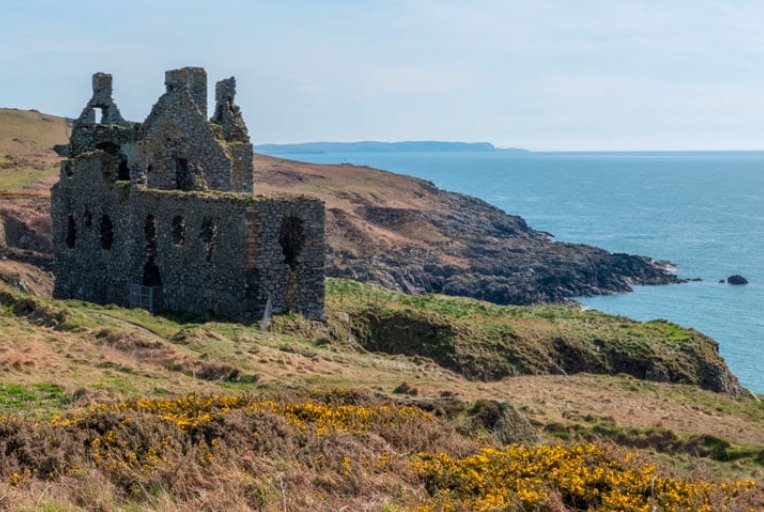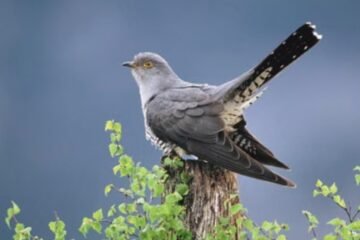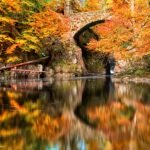A new 83-mile coastal hiking trail around the hammerhead-shaped Rhins of Galloway peninsula in south-west Scotland offers hikers an exhilarating mix of challenges and stunning natural beauty. Launched recently to boost tourism in this remote area, the path invites adventurers to explore deserted beaches, rugged cliffs, and abundant wildlife despite its still-developing sections.
The Trail’s Unique Challenges and Rewards
Hikers on the Rhins of Galloway coast path often find themselves on a rollercoaster of emotions as the route shifts from tough obstacles to breathtaking vistas. Early sections demand scrambling over fences and pushing through dense bracken that reaches waist height, with waymarks that sometimes vanish into the landscape.
This raw quality stems from the trail’s youth, as developers work to tame the terrain without losing its wild appeal. Yet, just when frustration peaks, the path reveals hidden gems like pristine white-sand bays and rocky shores teeming with seals. One walker recently described cursing through a thicket only to emerge into a scene straight out of a fairy tale, complete with a leaping hare, a watchful fox, and a soaring buzzard.
The contrast keeps the experience fresh and memorable, turning potential hardships into stories worth sharing. Local experts note that while the route tests endurance, it rewards with a sense of true discovery in a part of Scotland few visitors reach.

Ongoing Development and Key Improvements
The Rhins of Galloway coast path remains a work in progress, with significant upgrades planned to enhance accessibility by spring 2026. Dumfries and Galloway Council, in partnership with land managers, has already installed new bridges, gates, and waymarkers to clear barriers and improve navigation.
Recent efforts include the completion of a bridge at Port Slogan over the Lashendarroch Burn, providing hikers with safer crossings and panoramic views. These changes aim to connect the 64-mile core route from the Mull of Galloway to Loch Ryan into a full 83-mile loop, linking seamlessly with the established Mull of Galloway Trail.
Community involvement plays a big role, as volunteers and locals help maintain sections and promote responsible access under Scotland’s Outdoor Access Code. A new e-bike-friendly Lighthouses of the Rhins Trail launched in early 2025 adds variety for less strenuous outings.
To give hikers a clear overview, here is a table summarizing the six recommended stages of the path:
| Stage | Starting Point | Ending Point | Distance (miles) | Highlights |
|---|---|---|---|---|
| 1 | Stranraer | Kirkcolm | 14 | Loch Ryan shores, quiet villages |
| 2 | Kirkcolm | Portpatrick | 12 | Sandy beaches, historic harbor |
| 3 | Portpatrick | Port Logan | 10 | Dramatic cliffs, exotic gardens |
| 4 | Port Logan | Drummore | 15 | Mull of Galloway lighthouse, RSPB reserve |
| 5 | Drummore | Ardwell | 16 | Remote moors, wildlife spotting |
| 6 | Ardwell | Stranraer | 16 | Farmland paths, coastal reconnection |
This structure allows for a flexible six-day itinerary, adjustable based on fitness levels.
Wildlife and Scenic Wonders Along the Way
The Rhins of Galloway coast path shines brightest in its natural offerings, drawing nature lovers to its diverse ecosystems. Expect encounters with orchids blooming in meadows, seals lounging on crinkled foreshores, and deer herds bounding down cliffsides, creating moments of pure magic amid the rugged terrain.
The peninsula’s position as Scotland’s southernmost tip means views stretch across the Irish Sea, sometimes revealing Ireland, England, and the Isle of Man on clear days. The Mull of Galloway, an RSPB reserve, hosts seabirds and rare plants, while nearby Logan Botanic Garden showcases exotic species thriving in the mild climate.
Recent environmental programs, like the Wild Winter initiative that engaged over 400 locals in coastal discovery events, highlight the area’s marine biodiversity. These efforts not only educate but also protect habitats, ensuring the path’s beauty endures for future hikers.
For those planning a visit, consider these essential tips in bullet points:
- Pack sturdy boots and waterproof gear to handle wet, uneven ground and sudden weather changes.
- Check tide times to safely explore beaches and avoid isolated sections during high water.
- Start early to maximize daylight and spot more wildlife in the quieter mornings.
- Use apps or printed guides for navigation, as some areas lack strong phone signals.
Boosting Tourism in Scotland’s Forgotten Corner
This under-visited gem in Dumfries and Galloway sees far fewer tourists than the Highlands, with just 520,000 overnight stays in 2024 compared to 1.8 million up north. The coast path forms a key part of a broader strategy to revitalize the region, aiming to grow the visitor economy to £1.76 billion and create 20,000 jobs by 2034.
Local leaders see the trail as a lifeline for remote communities, encouraging sustainable tourism without overwhelming infrastructure. Proposals for a Galloway National Park could further elevate the area, though concerns about housing prices and road capacity linger among residents.
Tying into national trends, the path aligns with Scotland’s push for active travel, similar to recent investments in the South West Coastal 300 route. Early adopters report transformative experiences that could shift perceptions of south-west Scotland as a must-visit destination.
As you lace up your boots for this adventure, share your own Rhins of Galloway stories in the comments below and spread the word to fellow hikers, helping more people uncover this hidden treasure.


















